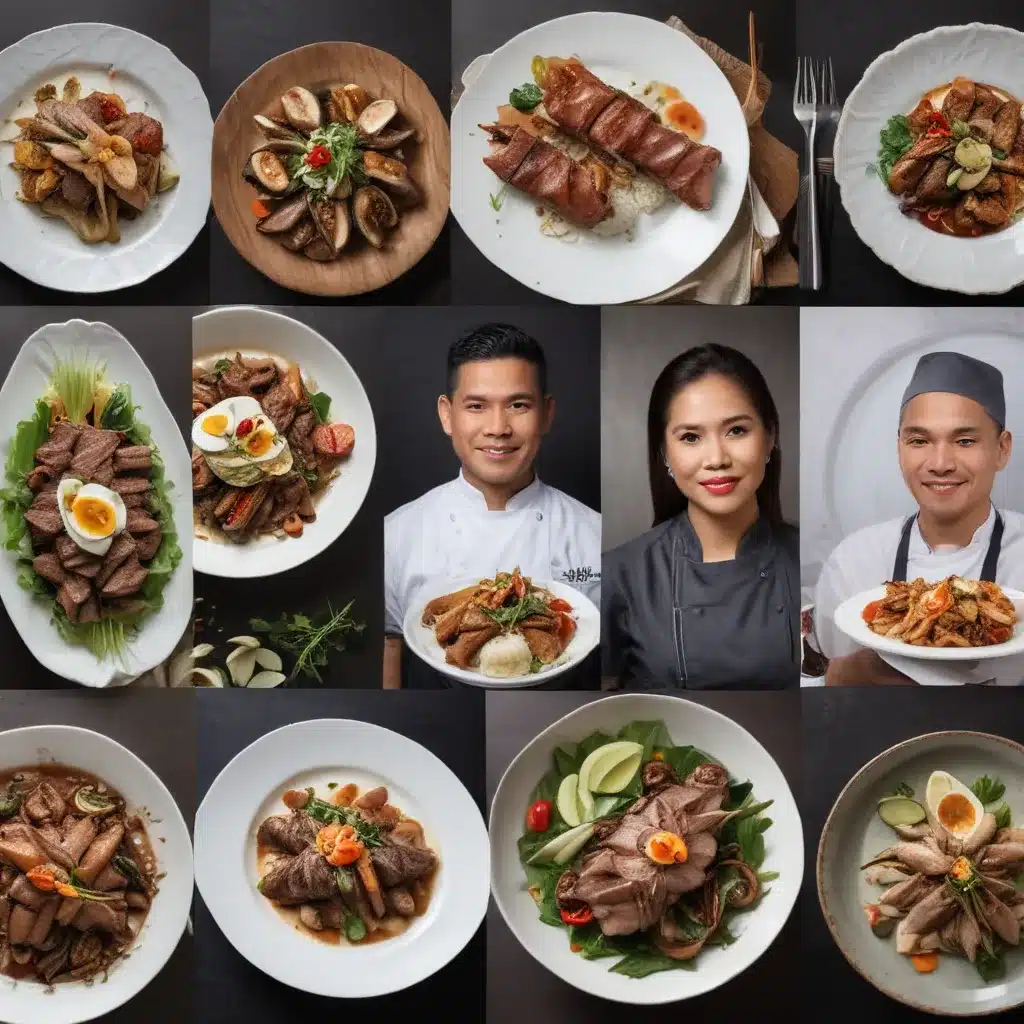
Uncovering the Culinary Gems of the Philippines
As an avid foodie and adventure enthusiast, I’ve always been drawn to the rich tapestry of flavors that the Philippines has to offer. From the bustling streets of Manila to the pristine beaches of Palawan, this archipelago nation is a veritable treasure trove of culinary delights. But what really piqués my interest are the latest trends in haute Filipino cuisine, as shared by some of the country’s most renowned executive chefs.
Recently, I had the opportunity to sit down with a few of these culinary maestros, and let me tell you, the insights they shared were nothing short of mind-blowing. They spoke with such passion and expertise, it was like they were conducting a masterclass in the art of Filipino gastronomy. And let me just say, if you’re looking to embark on a truly unforgettable culinary adventure, the Philippines is the place to be.
Elevating the Humble Adobo
Let’s start with the quintessential Filipino dish – the humble adobo. Now, I know what you’re thinking, “Adobo? Isn’t that just a simple stew?” Well, my friends, prepare to have your minds blown. According to Chef Margarita Forés, one of the country’s most celebrated culinary icons, the art of adobo-making is being elevated to new heights.
“Adobo is no longer just a stew,” Forés declares with a twinkle in her eye. “We’re seeing chefs experiment with different proteins, from the classic chicken and pork to more unconventional options like beef, seafood, and even vegetables. And the flavors? Oh, they’re truly out of this world.”
Forés goes on to describe how chefs are playing with the balance of salty, sour, and savory notes, creating adobo dishes that are nothing short of culinary masterpieces. “It’s all about finding that perfect harmony of flavors,” she explains, “and then elevating the presentation to make each dish a true work of art.”
But the real game-changer, according to Forés, is the use of premium, locally-sourced ingredients. “We’re seeing a real emphasis on using the best of what the Philippines has to offer – heirloom rice varieties, artisanal vinegars, and even foraged herbs and spices. It’s a true celebration of our culinary heritage.”
Reinventing Classic Dishes
Now, if adobo is the heart of Filipino cuisine, then the beloved lumpia (spring rolls) are surely the soul. And according to Chef Claude Tayag, the man behind the acclaimed Bale Dutung restaurant, the culinary world is witnessing a renaissance of this beloved snack.
“Lumpia is no longer just a simple fried roll,” Tayag explains, his eyes alight with enthusiasm. “Chefs are getting incredibly creative, playing with the fillings, the wrapping, and even the cooking techniques.”
Tayag goes on to describe how some chefs are experimenting with unconventional ingredients, such as duck, seafood, or even plant-based alternatives. “It’s all about pushing the boundaries and reimagining what a classic dish can be.”
But the real game-changer, according to Tayag, is the way chefs are presenting these reinvented lumpia. “We’re seeing elaborate plating, intricate sauces, and even multi-component dishes that showcase the versatility of this humble snack.”
One example that particularly caught my attention was Chef Tayag’s own creation – a lumpia that he describes as a “work of art.” He layers crisp, paper-thin lumpia wrappers with a sumptuous filling of shredded duck, caramelized onions, and a sweet-savory sauce, then tops it with a delicate drizzle of reduced balsamic vinegar. “It’s a flavor explosion in every bite,” he says, his grin widening.
Embracing Sustainability and Tradition
But the culinary trends in the Philippines don’t stop at just reinventing the classics. According to Chef Sau del Rosario, the founder of the acclaimed F&B consultancy Culinary Innovators, there’s a growing emphasis on sustainability and a return to traditional cooking methods.
“We’re seeing a real shift towards using locally-sourced, sustainable ingredients,” del Rosario explains. “Chefs are foraging for wild greens, partnering with small-scale farmers, and even reviving heirloom rice varieties that were once on the brink of extinction.”
And it’s not just about the ingredients, del Rosario adds. “Chefs are also rediscovering traditional cooking techniques, from wood-fired grilling to slow-simmered stews. It’s all about honoring the rich culinary heritage of the Philippines while also making it relevant for today’s diners.”
One example that particularly caught my attention was del Rosario’s own creation – a modern take on the classic kare-kare, a peanut-based stew. “I use locally-sourced, sustainable ingredients like water spinach, eggplant, and young jackfruit, and then I slow-cook the dish over a wood fire,” he explains. “The result is a dish that’s both deeply rooted in tradition and yet completely contemporary.”
But it’s not just the chefs who are embracing this shift towards sustainability and tradition. Del Rosario notes that diners are also becoming increasingly interested in the provenance of their food. “Filipinos are really starting to appreciate the stories behind the dishes they’re eating,” he says. “They want to know where the ingredients come from, how they were prepared, and the cultural significance of the dish.”
A Culinary Journey Awaits
As I listened to these esteemed chefs share their insights, I couldn’t help but feel a surge of excitement. The Philippines is truly a culinary powerhouse, and the trends they described are just the tip of the iceberg. From the reinvention of classic dishes to the embrace of sustainability and tradition, the country’s culinary landscape is evolving in fascinating ways.
And the best part? You don’t have to be a seasoned foodie to experience the magic of Filipino cuisine. Whether you’re looking for a weekend getaway, a cultural exploration, adventure sports, or a wellness retreat, the Philippines has something to offer. So why not embark on your own culinary adventure and discover the hidden gems of this remarkable archipelago nation?
The flavors, the stories, the passion – it’s all waiting for you. All you have to do is take the first step. Who knows, you might just discover your new favorite dish (or ten) along the way.


